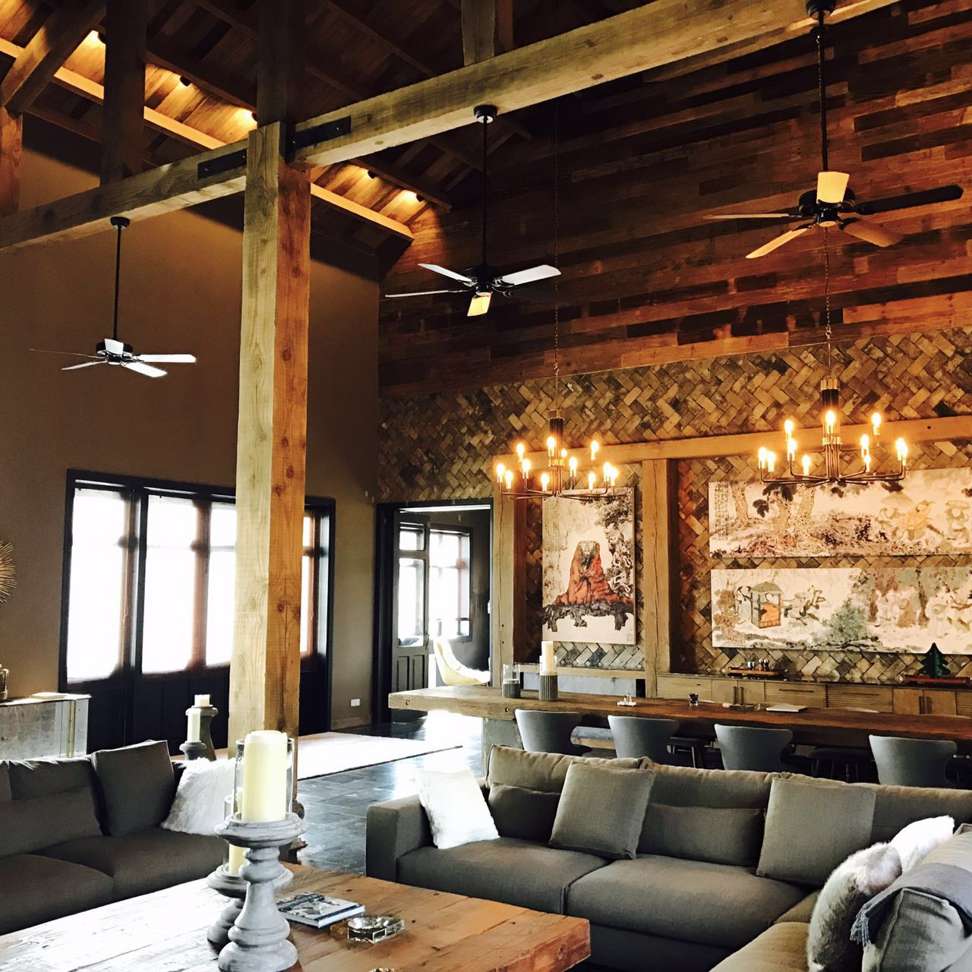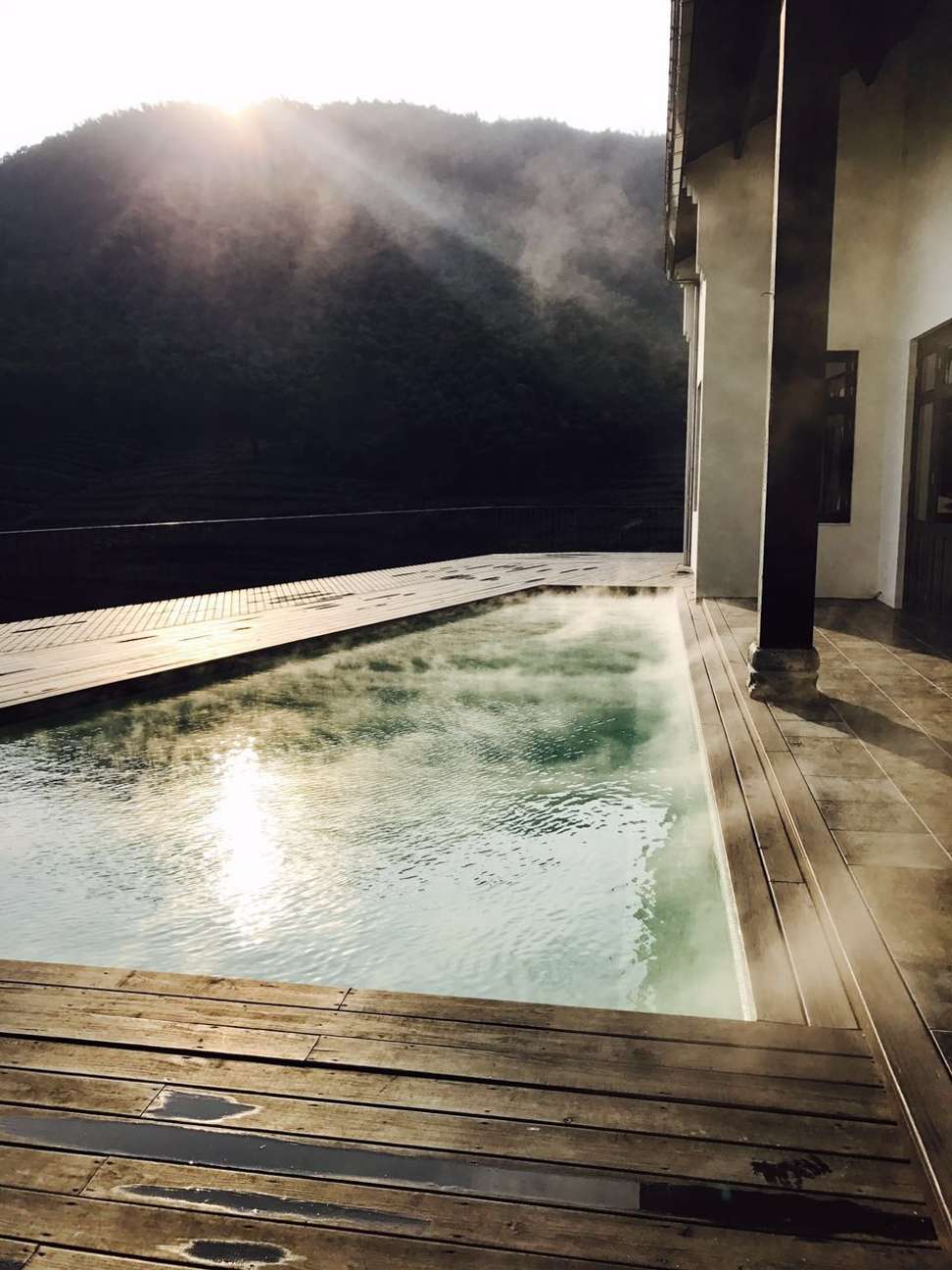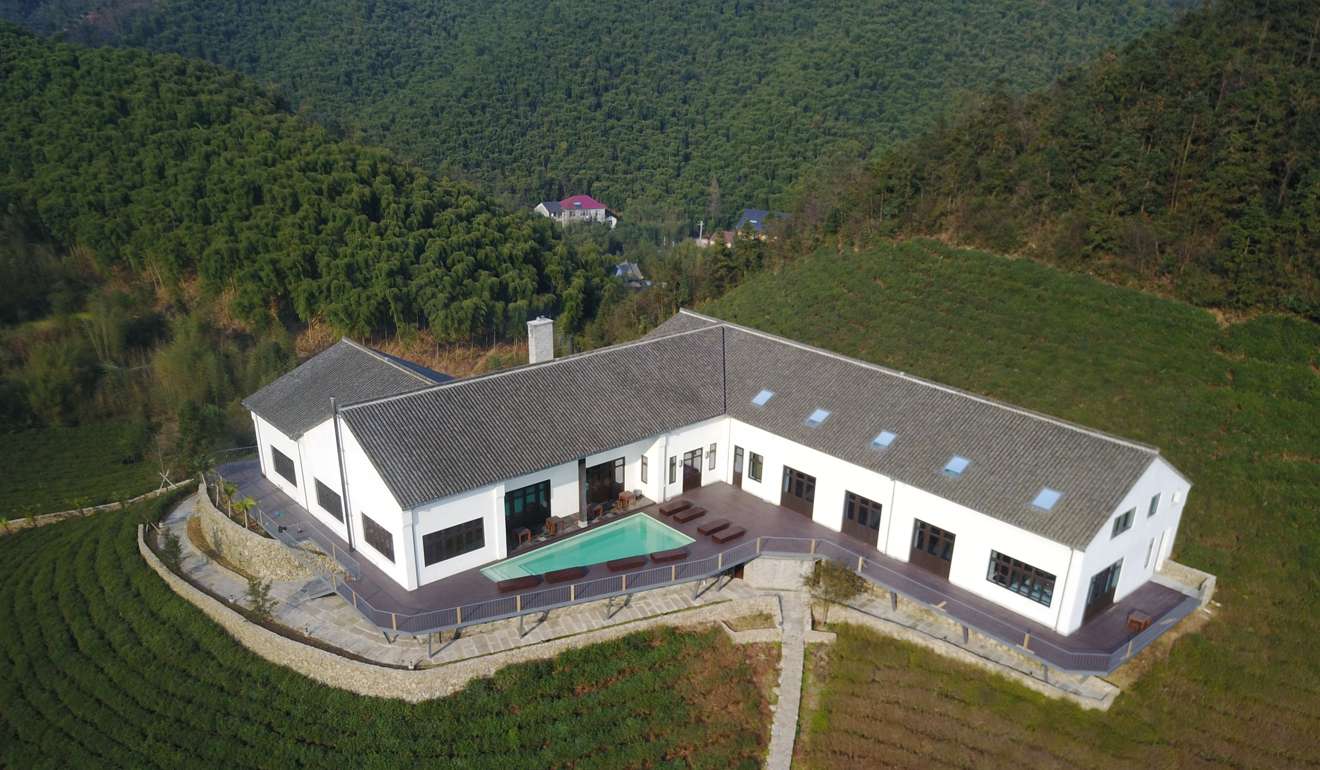
With villa renting for US$29,000 a weekend, no wonder Moganshan is talked of as the Hamptons of China
A forested summer retreat for wealthy Shanghainese since the 1920s, Moganshan has gained a new lease of life as a luxury getaway, epitomised by VVIP destination La Residence, opened by a Hongkonger and a Frenchman
There’s nowhere else like it in China – an eight-bedroom villa with no road access that rents for 198,000 yuan (HK$223,000, US$28,700) per weekend in the high season. So says Frenchman Christophe Peres, co-owner with his wife, Pauline Lee, a Hongkonger, of the hilltop La Residence in Moganshan, a leafy retreat east of Shanghai that’s set on becoming the Hamptons of China.
“There are eight double bedrooms, nine-metre ceilings, a private pool and a private kitchen that comes with a chef and a wine cellar,” says Peres as he guides us around the recently opened, 1,300-metre property set amid a tea plantation and with a 360-degree view of the surrounding bamboo forest.
“It’s unique in China, not just because of the price but also because there’s no proper road access… You have to walk up that small path of steps,” he says, gesturing to a walkway below the house. “We wanted to keep it private and not destroy the tea plantation,” he adds.
The couple built the house as their holiday home following the conversion of their first family retreat nearby into a hotel, Le Passage Mohkan Shan, when the local government approached them with plans to redevelop the area as a tourist destination.
“We have three boys so we needed a getaway for weekends and we found this beautiful tea plantation in Moganshan,” Peres recalls of their initial decision to build in Moganshan in 2007.
Building the second property was an ambitious and arduous task that took more than four years. All the building materials and furniture had to be carried up a small path on foot or by mule. The couple designed the villa using century-old recycled wood, and furnished it with arty Tai Ping rugs and an eclectic selection of design pieces. The path up to La Residence is made from recycled stone slabs.
“La Residence is more modern in architecture, and different from the hotel below, which is more French country house style,” says Peres.

With one son at school in France and the other two ensconced in Shanghai, Peres and Lee decided to put the villa up for rent, at prices (they start at 95,000 yuan for two nights) putting it in the top 1 per cent of luxury villas in China.
“We have a VVIP clientele who want privacy but don’t necessarily want to be in the hotel, so we put the house on the market as a private, high-end product – it’s one of the most unique locations in Moganshan,” says Peres. Their typical clients will be celebrities, high-net-worth individuals seeking privacy or perhaps companies holding important, closed-door board meetings, he says.
The opening of Le Passage in 2011 heralded the revival of Moganshan, and soon other properties followed, such as the eco-themed Naked Stables, with more than 100 rooms. More are on the way. Driving around the area, you’ll not only see a reservoir, gorgeous green bamboo forests and tea plantations but also how much building work is going on – much of it on high-end retreats. Peres and Lee are looking to cash in on the boom: three years ago they put Le Passage and the land it occupies, including tea plantation, on the market for 250 million yuan, a price which, Peres tells me, now also includes the La Residence villa.
Fluent in Putonghua, Peres – who can be found joking with locals or his staff when he’s at the hotel – has become an unlikely face of Moganshan’s revival, often meeting or paying social calls to local government officials. The expat has garnered some fame in China from the publication of a book in Chinese about his journey cycling alone 12,000km from Kashgar, in Xinjiang, to Beijing in 2001 to raise funds for Chinese children suffering from serious illnesses such as heart disease.
“Over the last 10 years there’s been a huge development in terms of tourism. So now you have a lot of hotels and minzhu – those small lodges. Last year, we had more than a million visitors to Moganshan. It’s popular – especially for those who live in Shanghai or Hangzhou,” Peres says.

Moganshan is a two-and-a-half-hour drive from Shanghai, and high-speed trains from Hangzhou to the nearest station, Deqing, take 13 minutes. It is as little as five hours from Beijing by high-speed train.
In the 1920s and 1930s Moganshan was a summer hill station for wealthy Shanghai residents, many of them foreign, escaping the heat and disease of the city for the cool, forested hills. Visitor numbers fell during the Japanese invasion of Shanghai. Following the communist revolution in 1949, it became a summer retreat for party leaders for a while, but by the 1980s Moganshan had lost its appeal. Only when people like Peres and Lee began visiting the area with their families in the late 1990s and early 2000s did a trickle of expats start exploring its potential. Today, at the original hill station, there’s a tiny, government-run museum charting the area’s history that Peres helped curate.
In recent years, with the government pushing to boost tourism, hotels and guest houses, many of them touting their ecological credentials, have sprouted. Now luxury mansions (think lots of marble and white columns) are going up, drawing China’s wealthy. Like others before them, they are attracted by Moganshan’s peace and quiet, and outdoor activities such as hiking and biking.

With China’s millionaire capital, Hangzhou, and Shanghai so close, it’s no wonder Moganshan’s leaders want it to become to the Yangtze River Delta what the Hamptons on Long Island have long been to the wealthy of New York.

